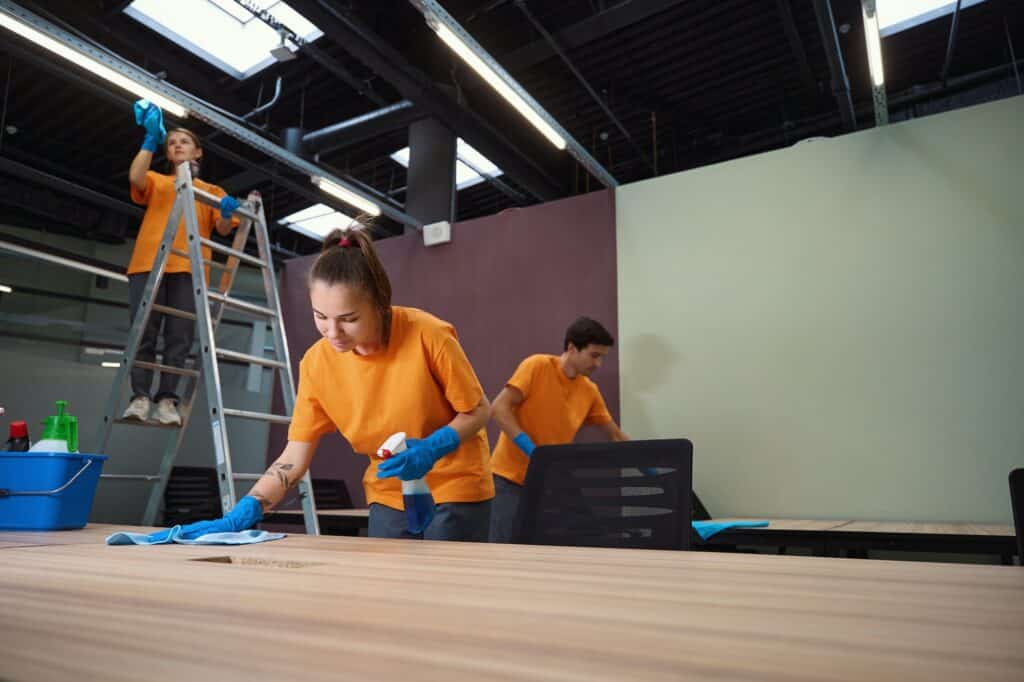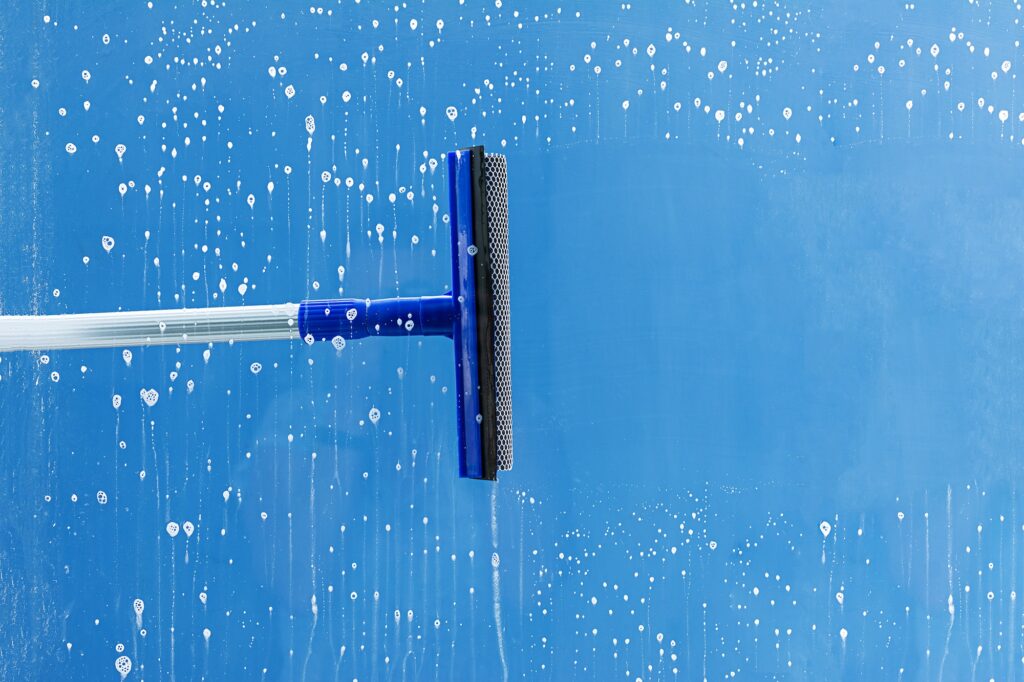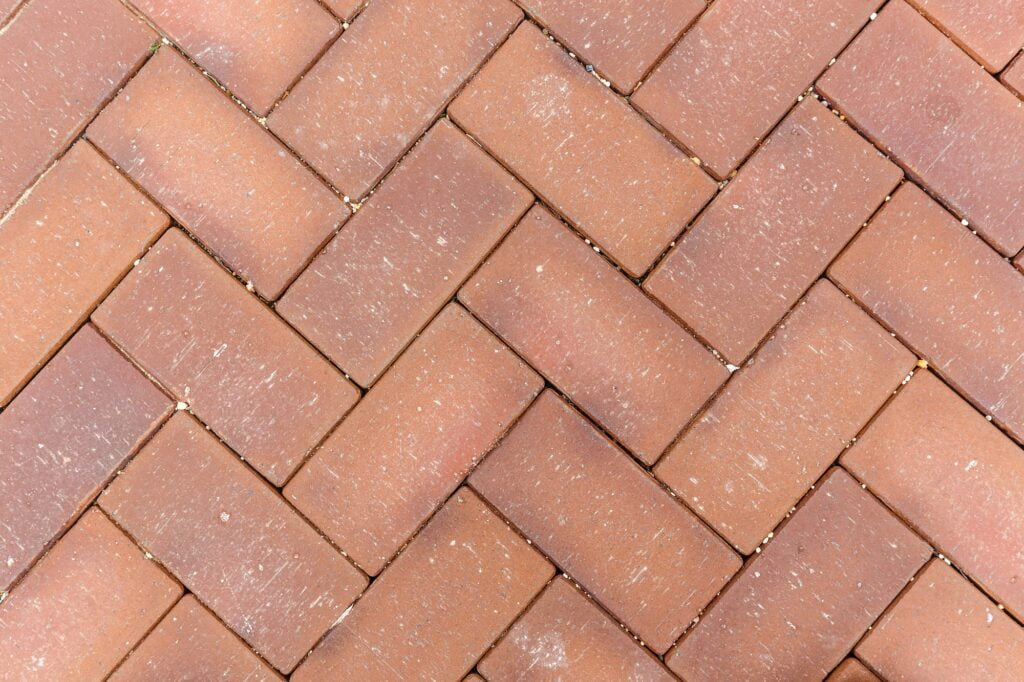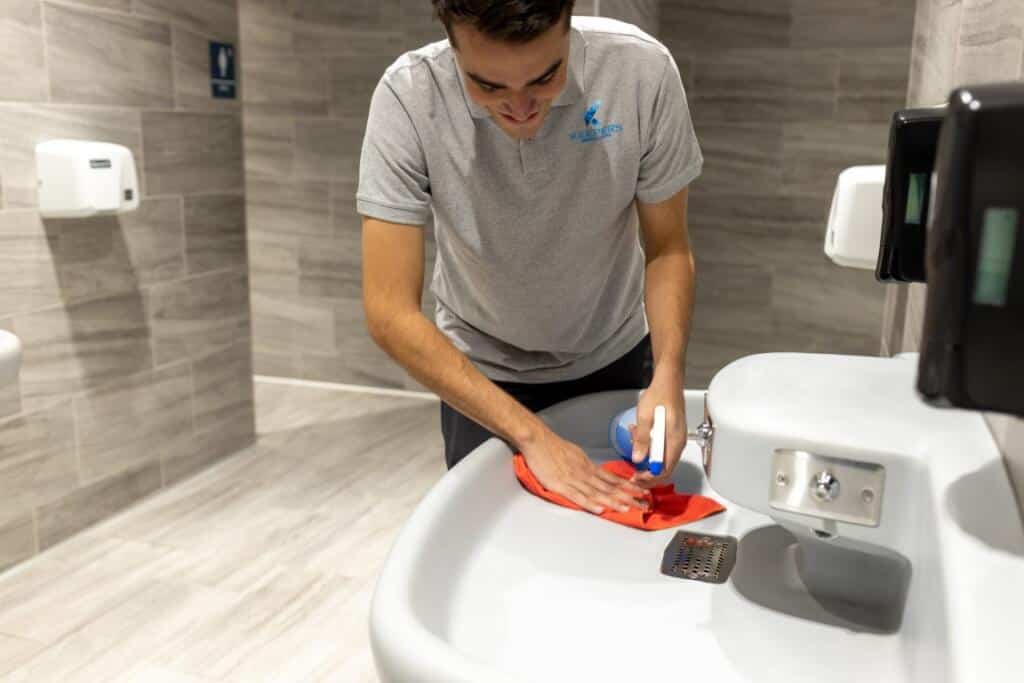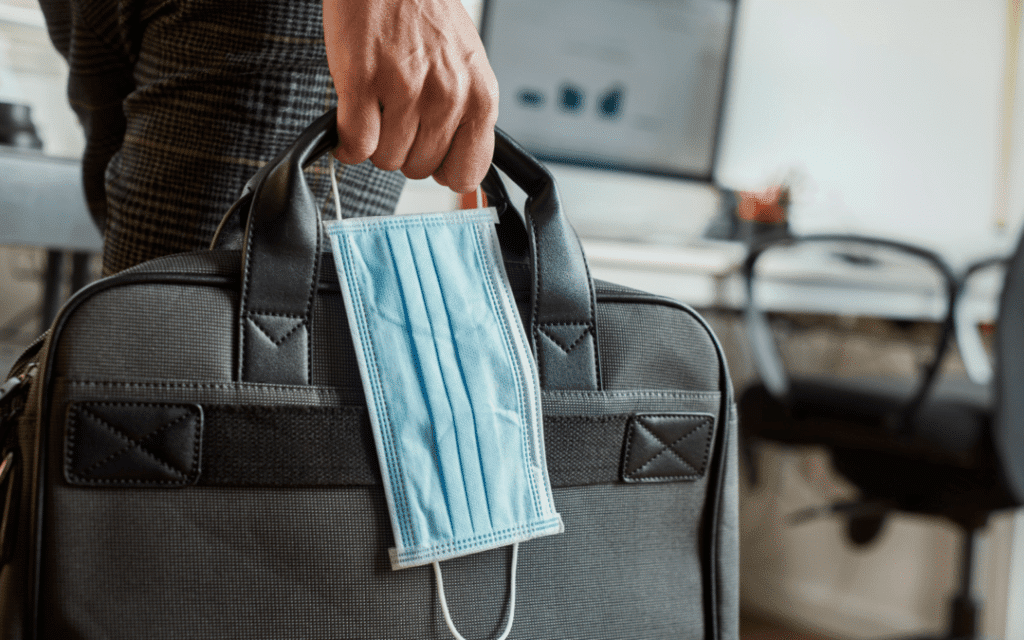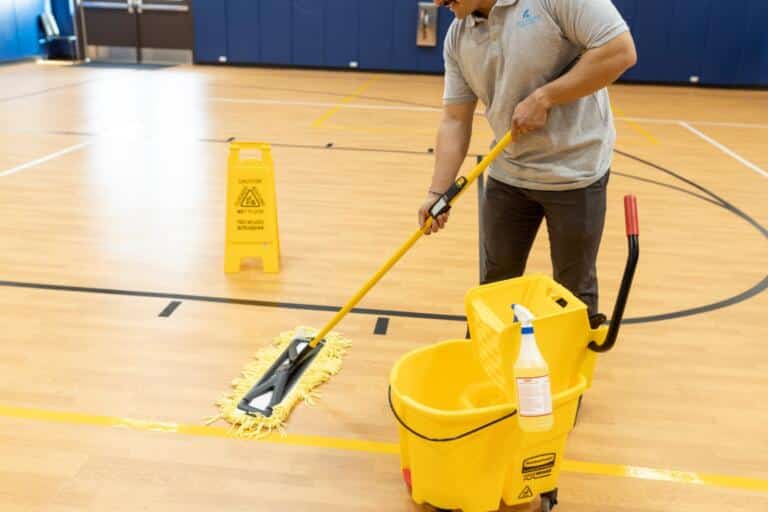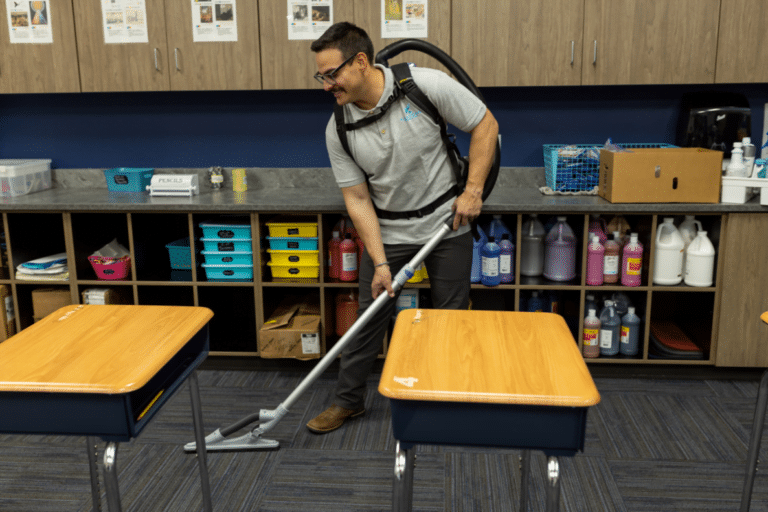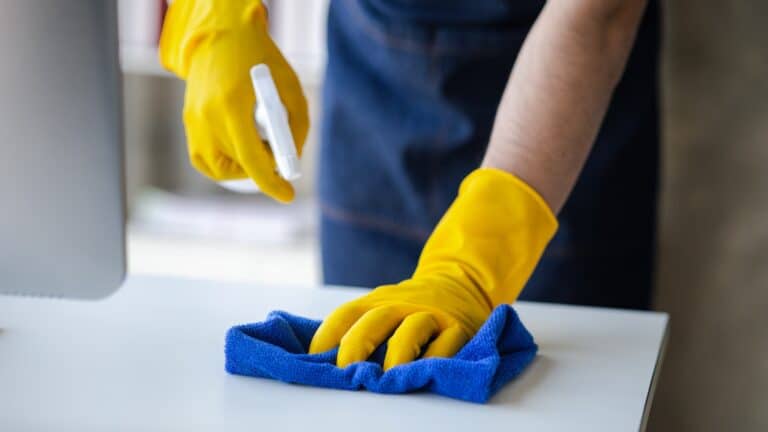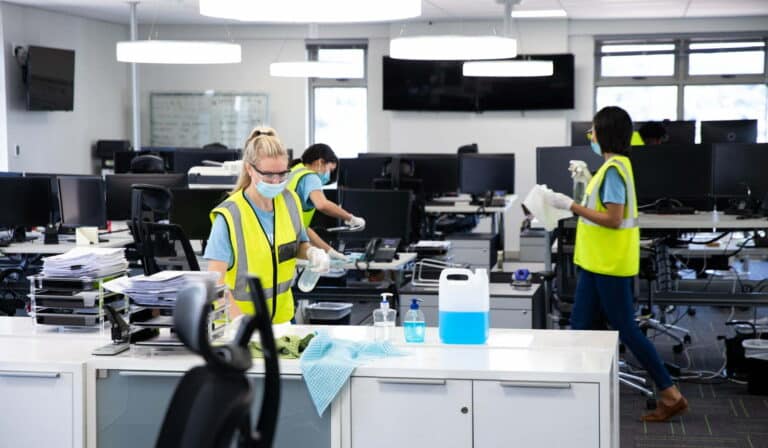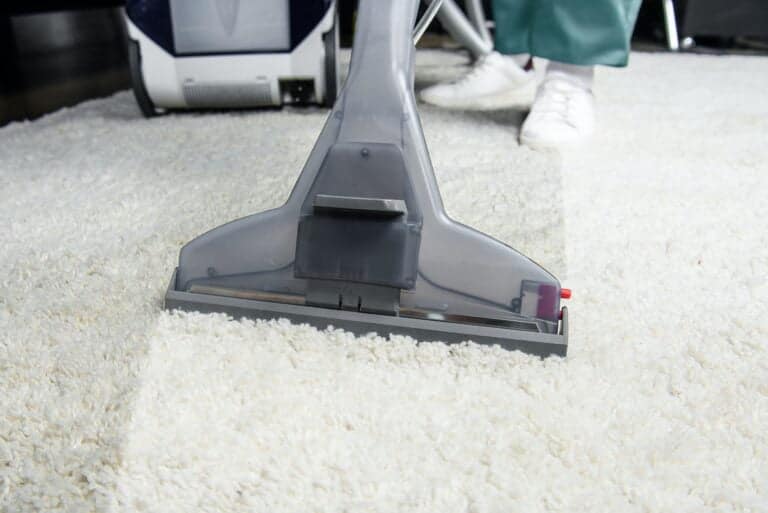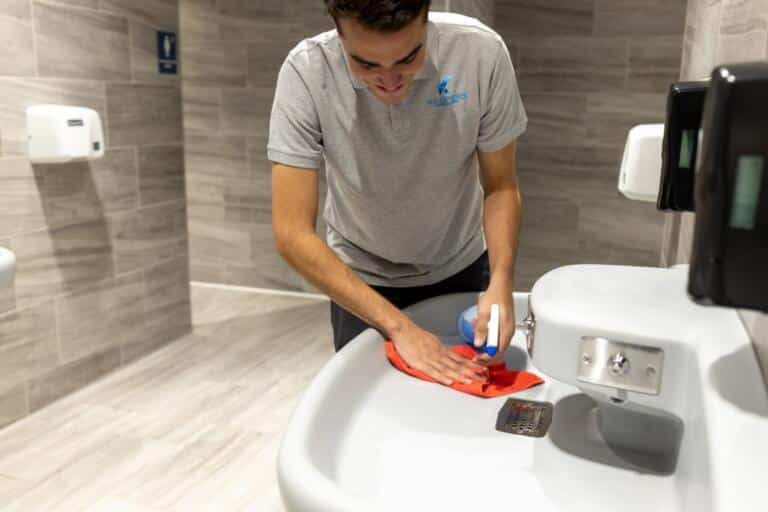Stains on your precious plasticware can be a real eyesore, especially after a dishwasher cycle with dish detergent or dish soap, right? Not to mention, plastic tupperware and other plastic ware products make your storage containers look old and worn out. This includes all types of plasticware. But here’s the thing: these stubborn stains on your dishwasher don’t have to be permanent with a spray of bleach solution or vinegar solution. Indeed, there are 10 remarkable methods for stain removal from your plasticware effectively and safely. These include the use of a spray or a bleach solution. This blog post will guide you through each dishwasher technique, ensuring you regain the pristine condition of your plasticware with stain removal, vinegar solution, and paste, without breaking a sweat. Whether it’s a stubborn spaghetti sauce stain on your plastic ware or coffee residue in your dishwasher, we’ve got a tip for every mess, even those on plastic containers! Don’t forget our handy paste for extra tough spots.
Harnessing Bleach for Deep Cleaning
Bleach, a household name, can be your go-to method for removing stubborn stains from plastic containers. The paste from the dishwasher can aid in this process. However, like every powerful tool, it requires careful handling.
The Power of Bleach in Breaking Down Stubborn Stains
In the world of cleaners, bleach is the equivalent of a superhero, especially when it comes to dishwasher stain removal and the method used for plastic containers. The method involving plastic containers has this superpower of breaking down tough stains that refuse to budge otherwise. Here’s how you can use it:
-
For effective stain removal in plastic containers, mix one part chlorine bleach with ten parts water. This method creates a potent bleach solution.
-
Apply this mixture on the stained area of your plastic containers using a sponge or damp cloth.
-
Let the stain removal solution sit for 10-15 minutes on your plastic containers before washing off.
Remember, patience is key here!
Safety Precautions When Using Bleach on Plastic Items
While bleach is great at its job, especially with plastic containers, it’s not something you want to mess around with carelessly. So here are some safety tips:
-
Always wear gloves while handling bleach in plastic containers; it can irritate skin.
-
Use bleach in plastic containers in a well-ventilated area as its fumes can be harmful if inhaled.
-
Never mix bleach with other cleaners inside plastic containers; certain combinations can produce toxic gases.
And remember, safety first!
Limitations and Potential Damage from Excessive Use of Bleach
Bleach might seem like the ultimate cleaning agent but it does have limitations and potential side effects on plastic containers.
Overuse or misuse of bleach on containers may result in discoloration or weakening of the plastic material over time. That’s why moderation is crucial when dealing with this potent cleaner, especially for plastic containers.
To avoid damage:
-
Don’t let the bleach solution sit on your plastic containers for too long.
-
After applying the solution to your plastic containers, rinse thoroughly to ensure no residue remains.
-
Avoid exposing bleached items, especially plastic containers, to sun immediately after cleaning as this may enhance discoloration.
Utilizing Denture Tablets’ Cleaning Power
Denture tablets are a hidden gem for removing stains from plastic containers. The effervescent action and non-abrasive nature of plastic containers make them a super effective cleaning tool.
The Magic of Effervescence
Did you know that the bubbling action of denture tablets can lift stains off your plastic containers? Sounds like magic, right? When you drop these tablets into water, they fizz up in plastic containers. This fizzing action is called effervescence. It’s powerful enough to dislodge even stubborn stains from the nooks and crannies of your plastic containers.
For example, let’s say you’ve got an old plastic container, specifically a lunch box stained with tomato sauce. Just fill your plastic containers with warm water, drop in a couple of denture tablets, and let them do their thing. After about 15 minutes, rinse it out and voila! Your lunch box looks as good as new.
Easy Peasy Lemon Squeezy
Another great thing about denture tablets is how easy they are to use, especially in plastic containers. No need for elbow grease or scrubbing till your arms ache with plastic containers. You just pop your items in plastic containers, add water, and chill while they work their magic.
A tablespoon of dawn power dissolver mixed with hot water can also be used if the stain on plastic containers is too stubborn. Just apply this mixture on the entire surface of your plastic containers using an old toothbrush and leave it for 15 minutes before rinsing it off.
Delicate Yet Effective
What’s more? These tablets are gentle on your delicate or intricate plastic items too! They’re not abrasive like some other cleaning agents so they won’t scratch or damage your plastic containers.
Take my grandma’s vintage tea set for instance – it had years’ worth of tea stains making it look dull and old, unlike the plastic containers we use today. I was worried about damaging my plastic containers, but then I tried denture tablets on them – worked like a charm!
In short, denture tablets are an underrated superhero in the world of cleaning, even when it comes to plastic containers. They’re cheap, easy to use, and super effective at lifting stains from plastic items. So next time you’re battling a tough stain on your plastic containers, give these tablets a shot!
DIY Solutions: Salt and Lemon Method
Here’s a cool trick to get rid of those stubborn stains on your plastic items. Our main players for this method are salt and lemon, both readily available in most kitchens, and plastic containers.
Abrasive Power of Salt
Salt isn’t just for seasoning your food, folks! It has some serious scrubbing power too. Tiny grains of salt act like mini scrub brushes that can help dislodge the stain particles from your plastic surface.
-
Sprinkle some salt on the stained area
-
Rub it gently with a damp cloth or sponge
You’ll see the magic happen right before your eyes!
Lemon: The Natural Bleach
Ever noticed how lemon juice stored in plastic containers can lighten the color of your hair? That’s because it acts as a natural bleach. This property of plastic containers comes in handy when dealing with stains too.
-
Squeeze some fresh lemon juice over the salted area
-
Let it sit for about 30 minutes
The acidity in lemon juice will work its way into the stain, helping to lift it off the plastic.
Economical and Eco-friendly Solution
Let’s face it, we all love solutions like plastic containers that don’t burn a hole in our pockets. And if they’re good for Mother Earth too? Well, that’s just icing on the cake!
The salt and lemon method is one such solution. Both ingredients are cheap, easy to find, and eco-friendly.
Plus:
-
They don’t contain harmful chemicals found in commercial cleaners
-
You’re reducing waste by not buying single-use plastic bottles
So next time you encounter a pesky stain on your favorite plastic container or utensil, remember this simple yet effective DIY solution using salt and lemon. Not only will you save money but also contribute towards saving our planet!
Unexpected Stain Remover: Hand Sanitizer
Let’s dive right into the nitty-gritty of how hand sanitizer can be your secret weapon against stubborn stains on plastic. We’ll also discuss a few precautions to keep in mind when using this method.
Alcohol Content Does the Trick
Hand sanitizers are not just for keeping germs at bay. The active ingredient, alcohol, has another surprising use – it can help dissolve certain types of stains on plastic surfaces. Think about that annoying ink stain from a leaky pen or the stubborn coffee stain on your favorite mug. A dab of hand sanitizer might just be what you need.
-
Apply some sanitizer directly onto the stain.
-
Let it sit for an hour or so.
-
Gently scrub with a moist cloth.
-
Rinse with warm water and dish soap.
Please note that this method works best on fresh stains.
Quick and Convenient
One of the great things about using hand sanitizer as a stain remover is its convenience. It’s something most people have readily available at home or even in their purse or car. So, next time you spot a small stain, don’t panic – reach for your trusty bottle of hand sanitizer!
Watch Out for Discoloration
While hand sanitizer can be effective at removing stains, it’s important to use it wisely. The high alcohol content may cause discoloration if left on plastic surfaces for too long. Always remember to rinse thoroughly after treating any stain with hand sanitizer.
Here are some tips to avoid potential discoloration:
-
Test a small area first before applying it all over the stained surface.
-
Don’t leave the sanitizer on for more than an hour.
-
Use protective gloves when handling strong sanitizers to protect your hands from irritation.
Natural Alternatives: Vinegar and Water
Vinegar is more than just a kitchen staple. It’s your secret weapon against stubborn stains on plastic.
The Magic of White Vinegar
White vinegar is amazing. Its acidic properties work wonders in breaking down the stain particles. Imagine it like a superhero, swooping in to save your beloved food storage containers from the villainous tomato sauce or juice stains!
-
Pro tip: Always opt for white vinegar over other types as some may leave their own stains or discolorations.
Diluting Vinegar with Water
While vinegar is great, it can be too strong for some plastics. That’s where water steps in, playing the role of a buffer.
-
Mix equal parts of white vinegar and warm water.
-
Soak the stained plastic in this mixture.
-
Let sit for about 30 minutes.
-
Rinse thoroughly with hot water.
Remember, it’s all about balance here! Too much vinegar could damage the plastic while too little might not be effective enough.
An Eco-Friendly Option
The best part about using a vinegar solution? It’s eco-friendly and non-toxic! This makes it perfect for cleaning food containers or children’s toys without worrying about harmful chemicals lurking around.
-
Fun fact: Did you know that commercial cleaning products release volatile organic compounds (VOCs) into the air? These can harm both your health and our environment!
Baking Soda: A Powerful Ally
When dealing with tougher stains, baking soda can provide an extra punch. Simply make a paste by mixing baking soda with some water, apply it to the stain, let sit for 15-20 minutes then rinse off with warm water.
-
Note: Be careful not to scrub too hard as baking soda is abrasive and could potentially scratch your plastic items!
Combating Food Dyes and Tomato Paste
Food dyes and tomato paste are notorious for leaving stubborn stains. But fear not, the vinegar-water solution or baking soda paste can handle these too.
-
Apply the product to the stain.
-
Let it sit for a while.
-
Rinse off with warm water.
-
Repeat if necessary.
Bye-bye, stubborn stains!
Commercial Stain Removers: Pros and Cons
High Efficiency and Convenience Offered by Commercial Products
Commercial stain removers are the go-to for many people. They’re like magic erasers that wipe away stains as if they were never there.
-
They work fast, saving you precious time.
-
Many of them are designed for specific types of stains, making them highly effective.
-
Their convenience is unmatched; just apply, wait a bit, then rinse or wipe.
But it’s not all sunshine and rainbows with these products.
Potential Chemical Residues Left Behind After Cleaning Process
There’s a downside to using commercial stain removers. Some of them can leave behind chemical residues on your plastic items.
-
These residues might be harmful if ingested, especially in food containers.
-
Over time, they could degrade the quality of your plastic items.
So while commercial stain removers are efficient, their potential risks cannot be ignored.
Cost Comparison Between Commercial Removers Versus Homemade Solutions
Let’s talk about money now. How do commercial stain removers stack up against homemade solutions cost-wise?
Recap on Plastic Stain Removal
Alright, there you have it! We’ve walked through 6 killer methods to zap those stubborn stains off your plastic items. From the potent bleach treatment to the eco-friendly vinegar and water combo, we’ve got all bases covered. Bet you didn’t think something like denture tablets or hand sanitizer could be your secret stain-busting weapon, huh? But remember, each method has its own strengths and trade-offs. So go with what suits your needs best.
Now it’s over to you! Don’t let those unsightly stains ruin the look of your precious plastic items. Give these tips a whirl and see how they work for you. If you found this guide helpful, why not share it with others? Let’s spread the word about these incredible stain removal hacks!
FAQs on Plastic Stain Removal
Can I use bleach on colored plastics?
While bleach is highly effective at removing stains from white plastics, it can discolor colored plastics. It’s always advisable to test a small area first before applying it all over.
Are commercial stain removers safe for food containers?
Most commercial stain removers are safe for food containers once thoroughly rinsed after use. However, always check the label for any specific warnings or instructions.
Will vinegar harm my plastic items?
Nope! Vinegar is a natural cleaner that’s generally safe to use on most types of plastic without causing any damage.
How often should I deep clean my stained plastic items?
It depends on how frequently they’re used and stained. For regularly used items like food containers, a deep clean every couple of weeks should keep them looking fresh.
Is hand sanitizer really effective at removing stains from plastic?
Yes indeed! Hand sanitizers contain alcohol which can break down many types of stains effectively. Just make sure to rinse well afterwards.

